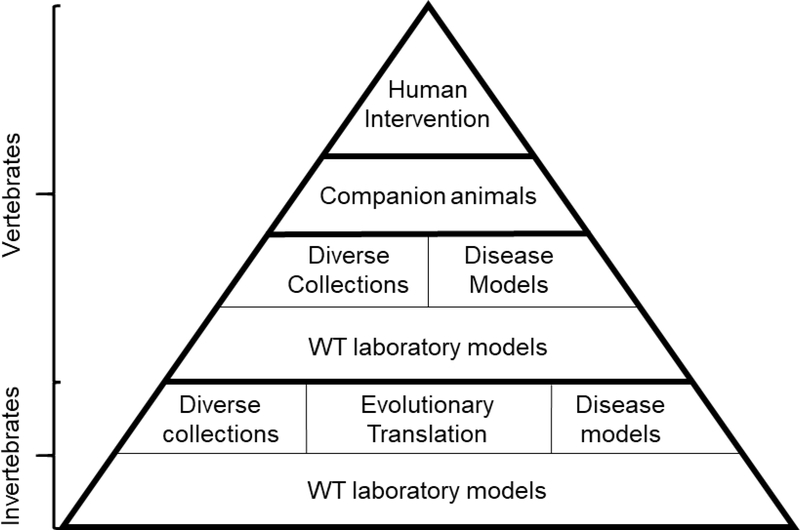Translational geroscience is an interdisciplinary area descended from primary gerontology that seeks to determine, validate, and clinically apply interventions to maximize wholesome, disease-free lifespan.
In this overview, we describe a analysis pipeline for the identification and validation of lifespan extending interventions. Beginning in invertebrate mannequin programs, interventions are found and then characterised utilizing different invertebrate mannequin programs (evolutionary translation), models of genetic variety, and illness models.
Vertebrate mannequin programs, significantly mice, can then be utilized to validate interventions in mammalian programs. Collaborative, multi-site efforts, just like the Interventions Testing Program (ITP), present a key useful resource to assess intervention robustness in genetically numerous mice.
Mouse illness models present a device to perceive the broader utility of longevity interventions. Beyond mouse models, we advocate for research in companion pets.
The Dog Aging Project is an thrilling instance of translating analysis in canine, each to develop a mannequin system and to lengthen their wholesome lifespan as a aim in itself. Finally, we talk about proposed and ongoing intervention research in people, unmet wants for validating interventions in people, and speculate on how variations in survival amongst human populations could affect intervention efficacy.

Translational Geroscience: From invertebrate models to companion animal and human interventions.
Day-to-Day Contact and Help Among Neighbors Measured within the Natural Environment.
Empirical proof means that the idea of “neighboring” (i.e., social contact and social assist inside a neighborhood) is expounded to between-person variations in well-being amongst older adults.
However, little is thought in regards to the within-person variations in older adults’ on a regular basis lives, which limits the ecological validity of prior findings.
This research examined within-person associations between neighboring and the existence of constructive valence, loneliness, and attachment to one’s neighborhood.
The pattern consisted of 4,620 observations of 20 days, drawn from 77 adults aged between 61 and 90 years. A cellular utility on a smartphone was used for knowledge assortment.
The outcomes of the multilevel evaluation counsel that every day contact with one’s neighbors was not considerably related to every day constructive valence, however it was positively associated to every day emotions of not being alone and every day attachment to one’s neighborhood.
The research makes noteworthy contributions to the sphere of gerontology by making use of a micro-longitudinal analysis design to assess real-life within-person info.
